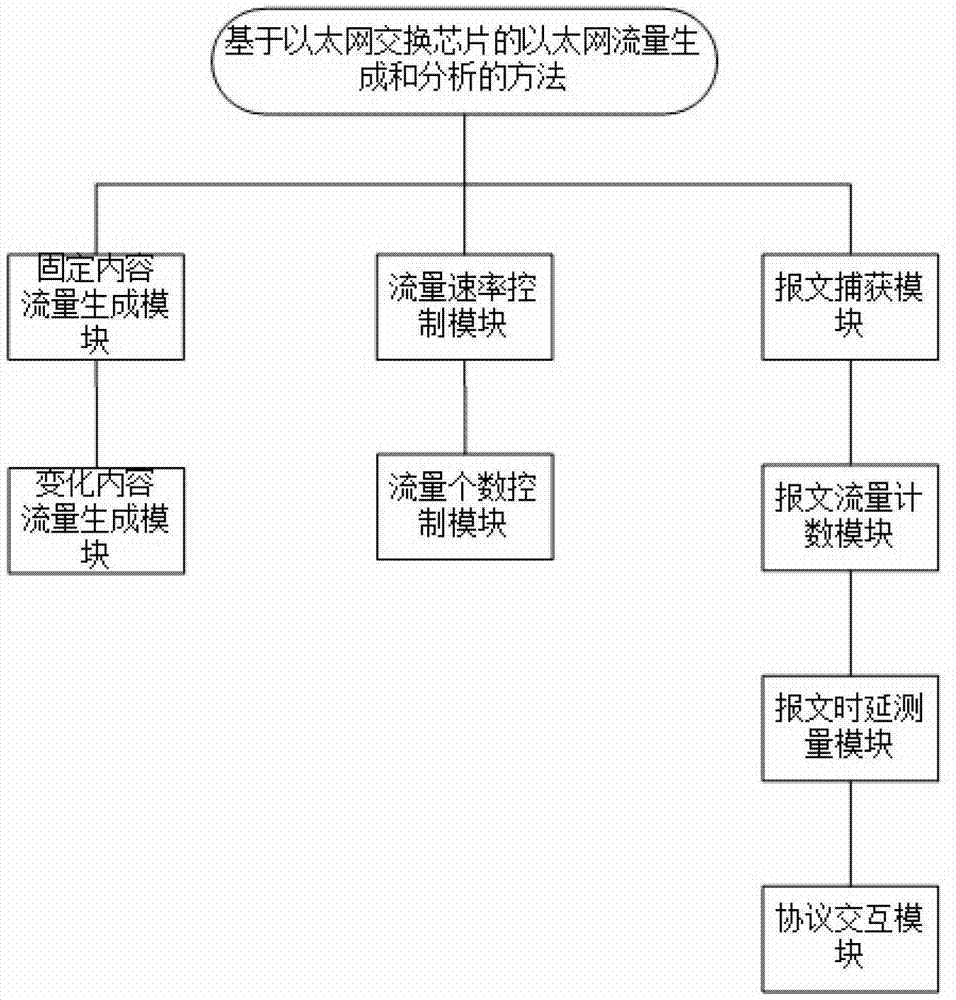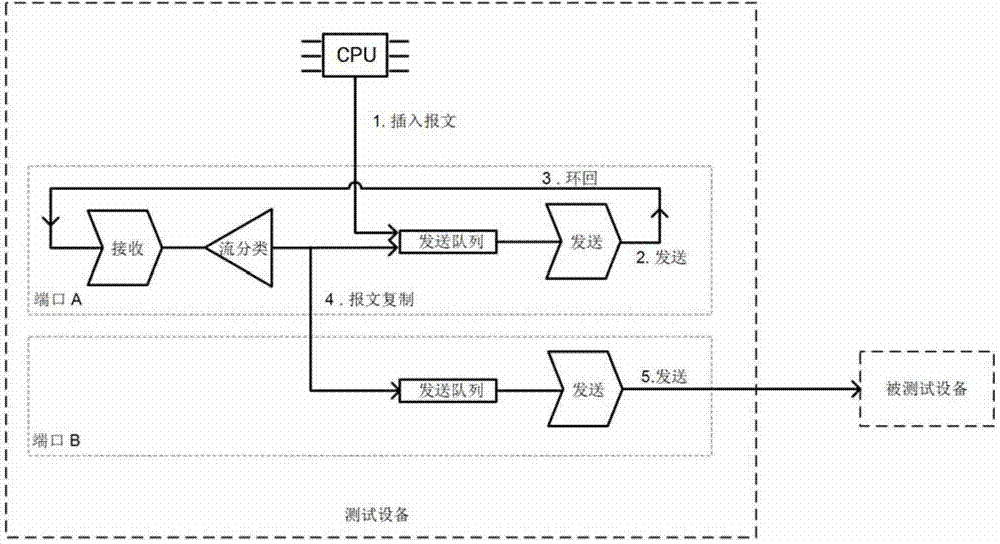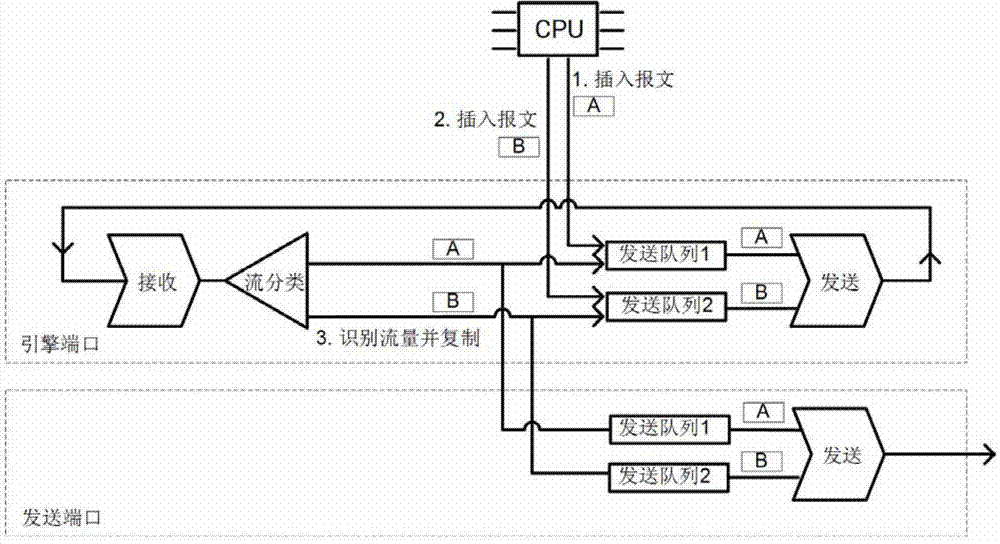Ethernet traffic generation and analysis method based on Ethernet switch chip
A switching chip and Ethernet technology, which is applied in the field of Ethernet traffic generation and analysis, can solve problems such as test environment impact, high R&D cost, and technical difficulty, and achieve large device volume and port density, reduce R&D costs, and low noise Effect
- Summary
- Abstract
- Description
- Claims
- Application Information
AI Technical Summary
Problems solved by technology
Method used
Image
Examples
Embodiment 1
[0101] Embodiment one, such as Figure 15As shown, the device under test is a Layer 2 Ethernet switch, and its forwarding method is based on the search of the destination MAC address. When the search fails, the message is broadcast to all ports (except the receiving port), and when the search is successful, the message is only unicast to the corresponding exit. For the source MAC address of each packet received, the switch will record the information of its receiving port. The test equipment provides three externally visible ports A, B, and C, which are the sending port and the receiving port mentioned above, where A and B respectively have an internal engine port X, Y to provide traffic generation functions for them; The test equipment also provides three externally visible ports as D, E, and F, which have the function of Layer 2 forwarding; ABCDEF all work at a rate of 100 mbps (megabits per second).
[0102] Through the following steps, we will verify the forwarding behav...
Embodiment 2
[0119] Embodiment two, such as Figure 16 As shown, the tested device is a three-layer router, which provides four ports: E, F, G, H, and the rate is 1G bps. Set the routing rule configuration as:
[0120] F port is the interface leading to the 192.168.1.1~192.168.1.254 network segment,
[0121] G port is the interface leading to the 192.168.2.1~192.168.2.254 network segment,
[0122] Port H is the interface leading to the 192.168.3.1~192.168.3.254 network segment,
[0123] The test equipment provides four external ports: A, B, C, and D, all of which have a rate of 1G bps, and an internal engine port X and a delay measurement port Y, all of which have a rate of 1G bps.
[0124] Through the following test flow, we will verify whether the router has routing function and forwarding performance.
[0125] Send three test traffic from port A, which are:
[0126] 1) The destination IP is 192.168.1.100, the frame length is 1500 bytes, the rate is 1000 pps, and the flow is continu...
Embodiment 3
[0138] Embodiment three, such as Figure 17 As shown, the device under test is an Ethernet layer-3 switch, which provides an external port B, which is bound to a layer-3 interface 192.168.1.1, so it will respond to the ARP request message (the query IP is 192.168.1.1), and the test device External port A is provided.
[0139] Through the following steps, we will verify the ARP protocol interaction function of the three-layer switch.
[0140] Step 1: Use the "protocol interaction module" to generate an ARP request message. The specific operation is: the software module on the CPU generates an ARP request message whose IP address is 192.168.1.1, and inserts it into the sending queue of port A, and then reports The file is sent to port B of the device under test;
[0141] Step 2: After the software module on the device under test processes the ARP request message, it generates an ARP reply message and sends it out from port B;
[0142] Step 3: Use the "protocol interaction mod...
PUM
 Login to View More
Login to View More Abstract
Description
Claims
Application Information
 Login to View More
Login to View More - R&D
- Intellectual Property
- Life Sciences
- Materials
- Tech Scout
- Unparalleled Data Quality
- Higher Quality Content
- 60% Fewer Hallucinations
Browse by: Latest US Patents, China's latest patents, Technical Efficacy Thesaurus, Application Domain, Technology Topic, Popular Technical Reports.
© 2025 PatSnap. All rights reserved.Legal|Privacy policy|Modern Slavery Act Transparency Statement|Sitemap|About US| Contact US: help@patsnap.com



